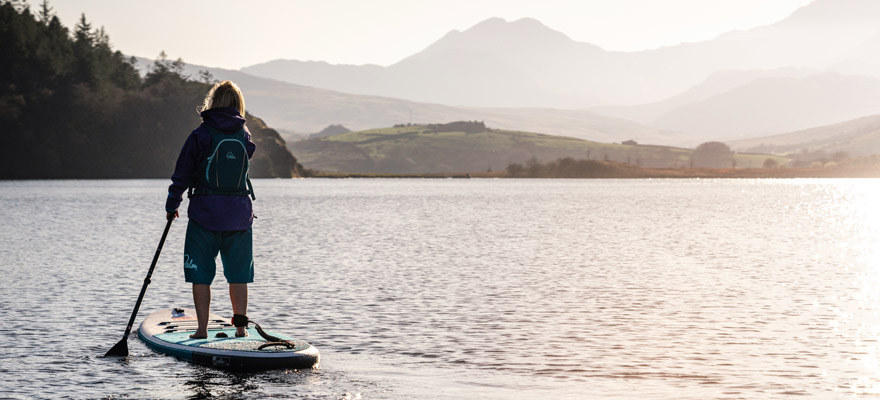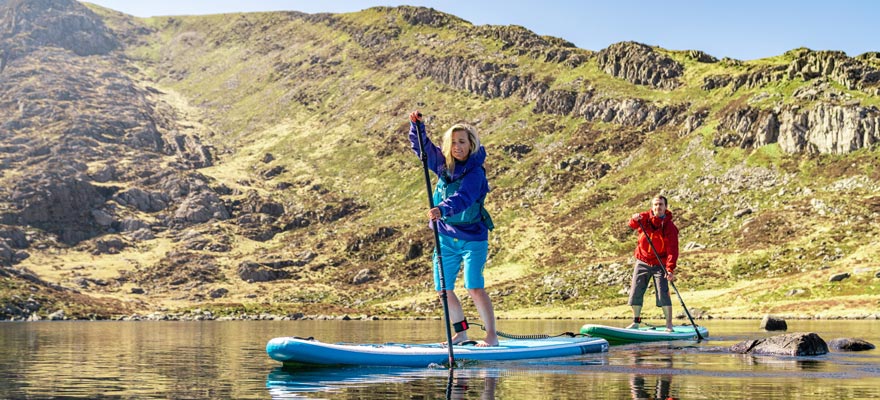Is Stand Up Paddle Boarding Safe?

Paddle boarding has quickly grown in popularity in the UK. For many it is their first step into water sports and it's common to wonder just how safe the activity is.
As with all outdoor sports, and water sports in particular, there are some dangers that you need to be aware of and prepared for. However, for the most part stand up paddle boarding is a very safe sport. As long as you have the right knowledge and manage the dangers correctly, you will enjoy many safe and stress-free days on the water. Here are some key points to consider.
Weather Conditions
One of the main dangers of paddle boarding is the impact of weather. Paddle boarders are vulnerable to the wind, and when blowing strongly, it can be very easy to be swept off-course. Windy is a great resource for paddleboarders, giving you a good idea of wind conditions. To make sure you aren't caught out, be sure to check how the conditions are predicted to change throughout the expected duration of your paddle.
High rainfall can also increase the danger of paddling, especially if you are on rivers. It’s likely to increase the water speed and chances of debris in the water.
Don’t be afraid to cancel a paddle if you arrive at your intended spot and have any doubt about the conditions. It’s always better to come back and try another day rather than risk paddling in conditions that are out of your depth.
Water Conditions
Often linked with weather, water conditions can also increase the danger of paddling. There are a number of factors to consider.
- Swell – If paddling in the ocean, then keep a close eye on the surf report – Magic Seaweed is a useful tool for forecasting. It goes without saying that big waves bring additional danger. High wind can also produce waves on bigger lakes.
- Current – Always pay attention to the strength of the current and flow of water.
- Quality – Following high rainfall water quality in rivers, lakes and the ocean are all likely to drop. Significant rainfall often leads to an increase in agricultural run-off, sewage/water recycling discharge and general containments being washed into the water.
- Temperature – Ensure that you always dress appropriately for the water temperature. You should stay aware of the temperature year round, but it’s especially important to consider water temperatures during the spring months when air temperature may have begun to warm, but water temperature remains low.
Personal Flotation Device
You should never paddle without a PFD (or lifejacket); it is the most important piece of safety equipment. Should you fall in the water or be separated from your board it can quite literally save your life. With the option of Red Paddle Co’s minimal hip pack style devices, there is no reason not to wear a PFD on every journey.

Swimming ability
With a big inflatable board it can be easy to be lulled into a false sense of security, and venture into more challenging water than you may usually go into. However, as a guide, you should never paddle in conditions that you would not feel comfortable swimming in. There is always a chance that you may be separated from your board (you should always wear a leash to minimise this risk), so being a strong swimmer is crucial to safety.
Incorrect Technique
Most people are able to pick up paddle boarding quite quickly. However, it’s important to ensure that your technique is correct, as not only will poor technique make paddling harder, but it can also put additional stress on your body. Importantly make sure that you are holding the paddle correctly to prevent any hand, shoulder or spine pain. Find out more in our post on mistakes every first-timer makes on a paddle board.
Paddling Alone
Always make sure that you paddle with at least one other person. Paddling with somebody else means that you always have someone to help you out should you get into difficulty, and likewise, you are able to help them should they get into trouble. It’s also important to inform somebody on land where you are going and how long you expect to be.
Ultimately as long as you read and understand the conditions, wear a floatation device, paddle within your ability and with somebody else, stand up paddle boarding is a safe sport. As with all outdoor sports, be sensible, prepare properly and have fun!
About the Author:Huw Saunders - Outdoor ExpertGrowing up in rural Wales, Huw has been immersed in the outdoors for as long as he can remember. If not surfing the Welsh coast, he can now usually be found either running or hiking in the Peak District and through the winter, tries to get out to Europe to ski as much as possible. |






